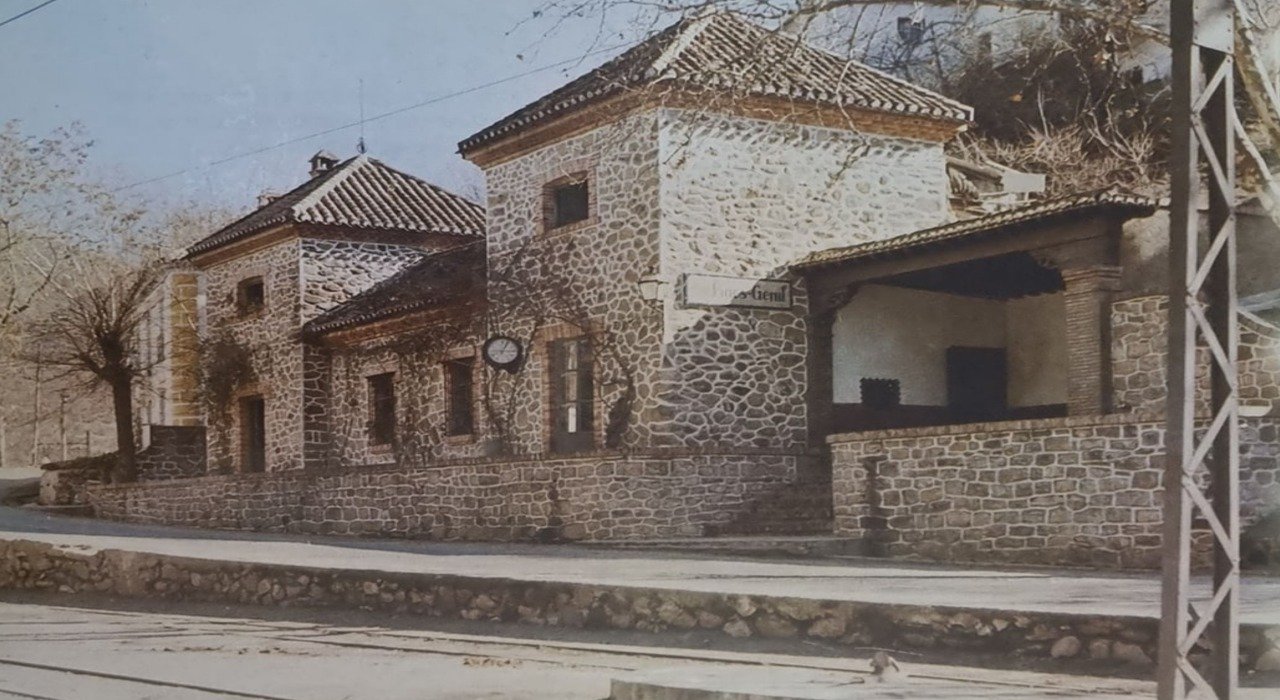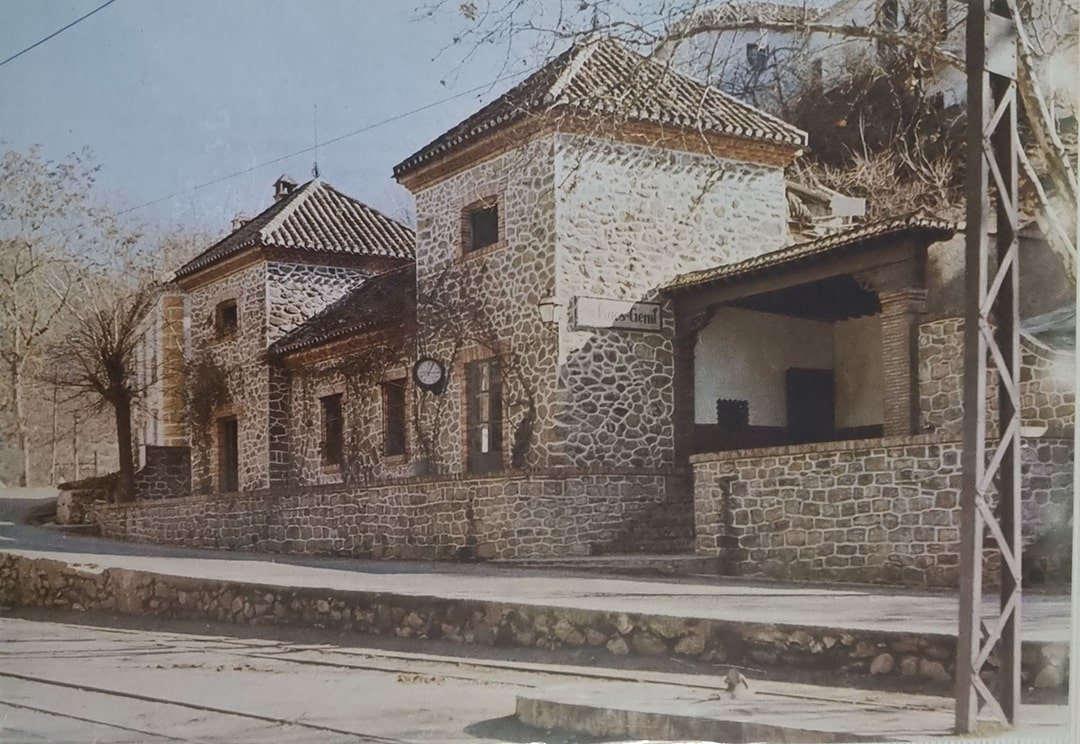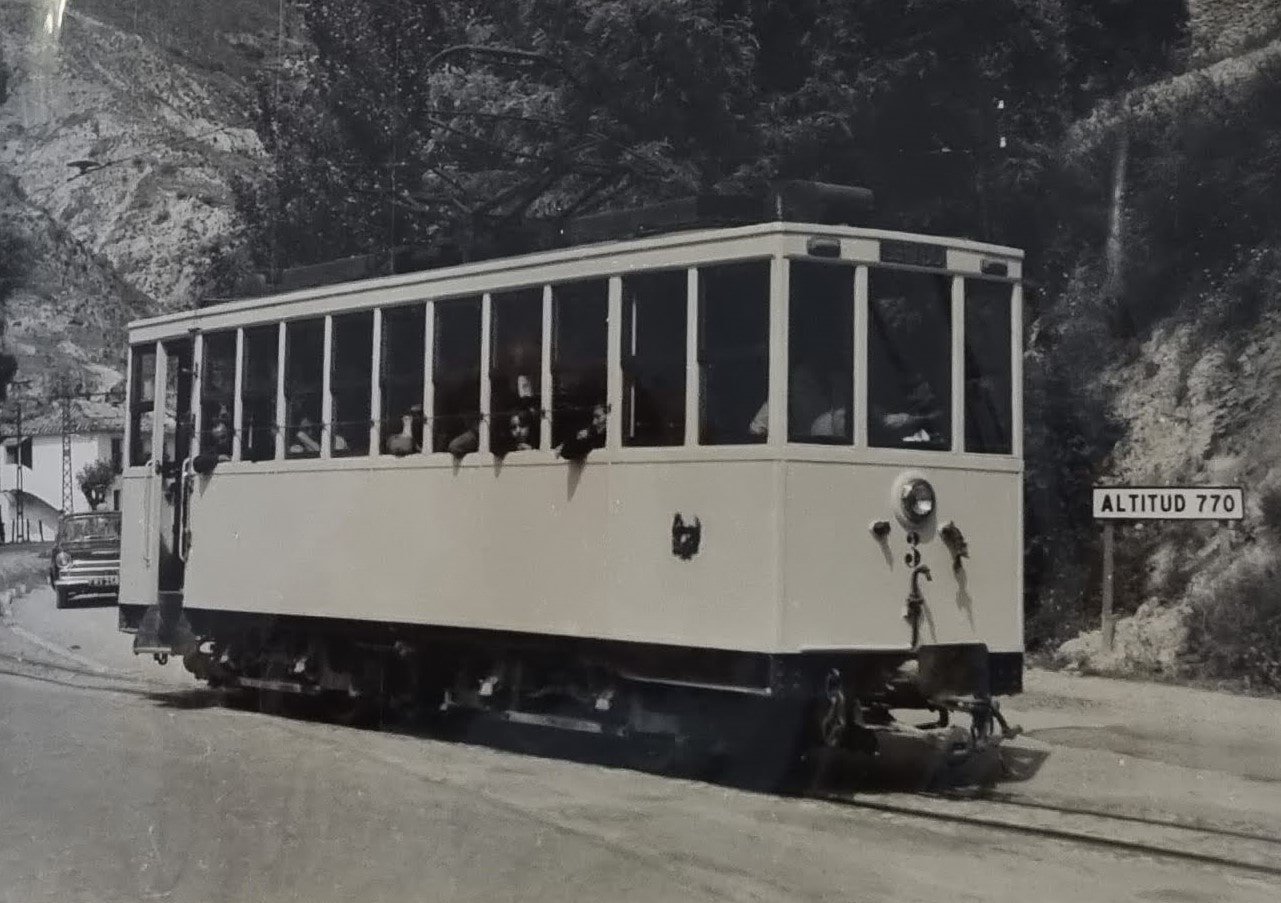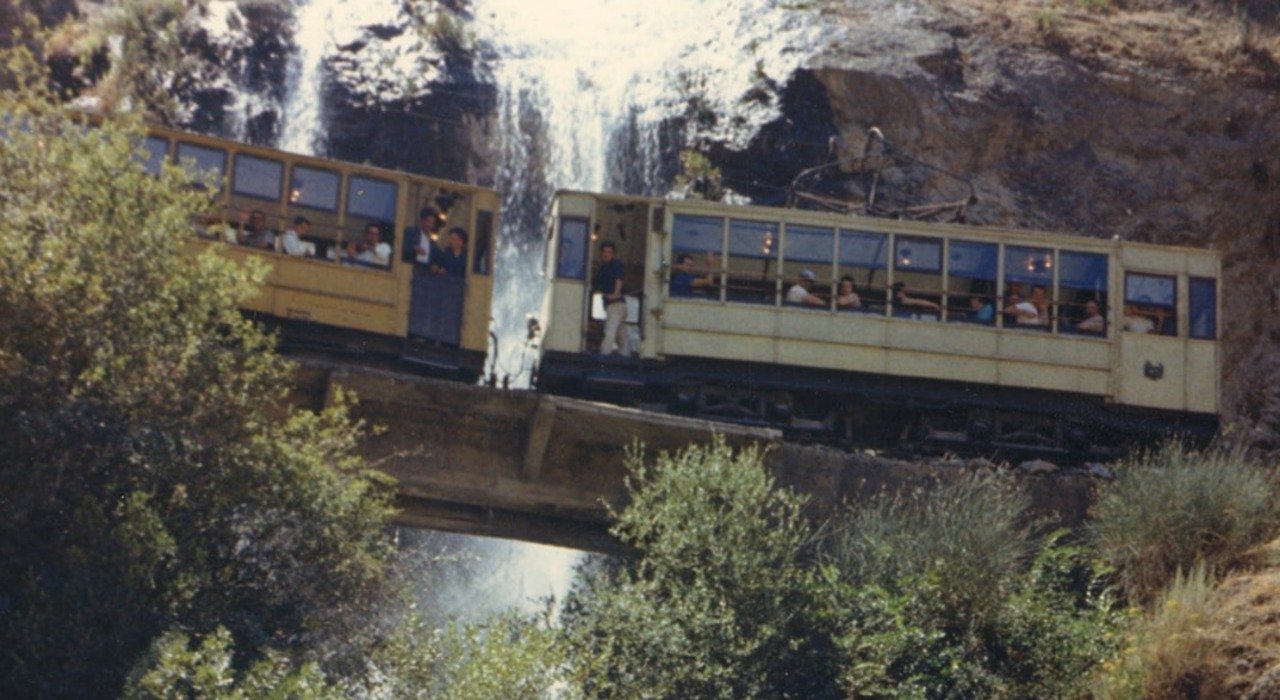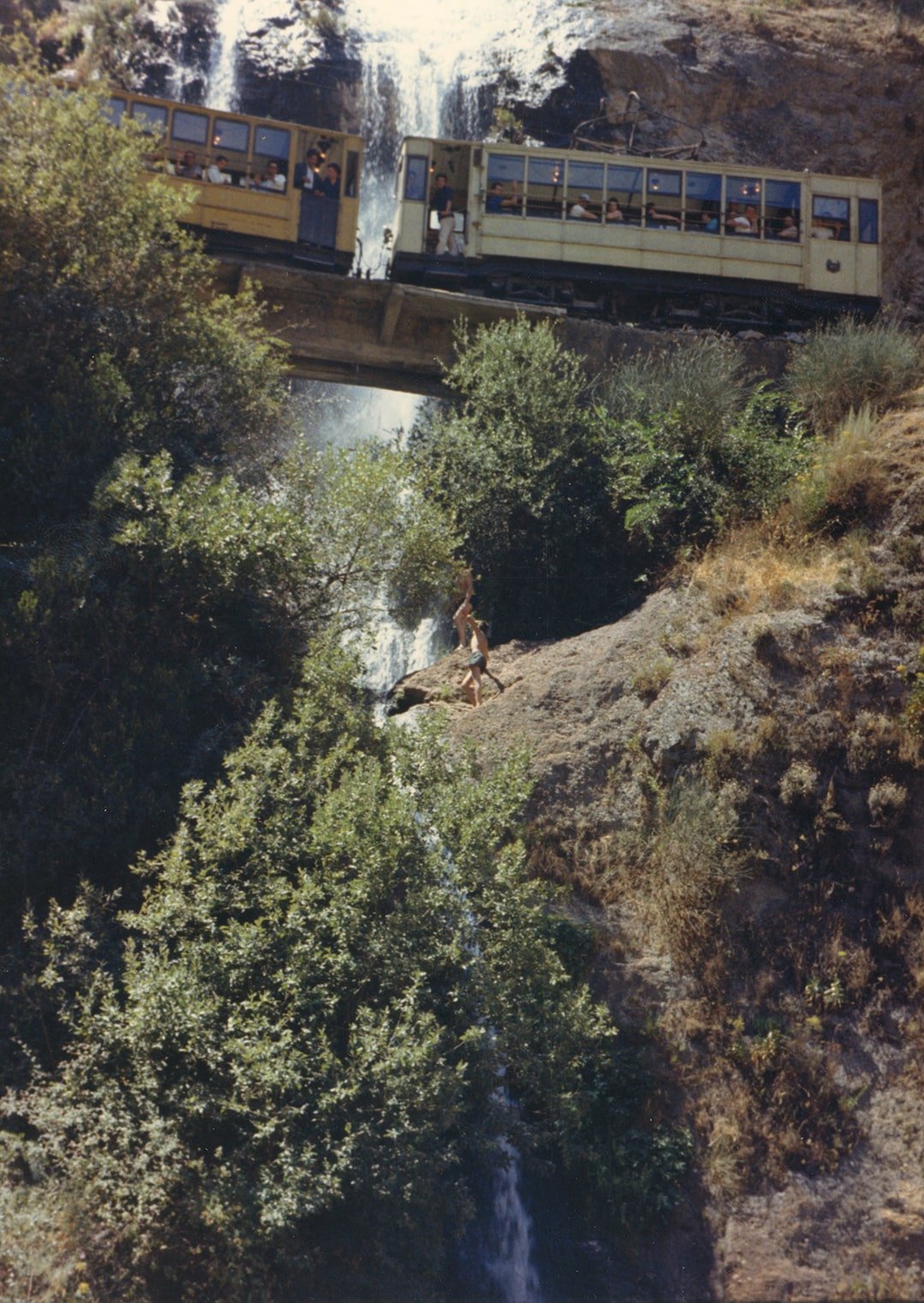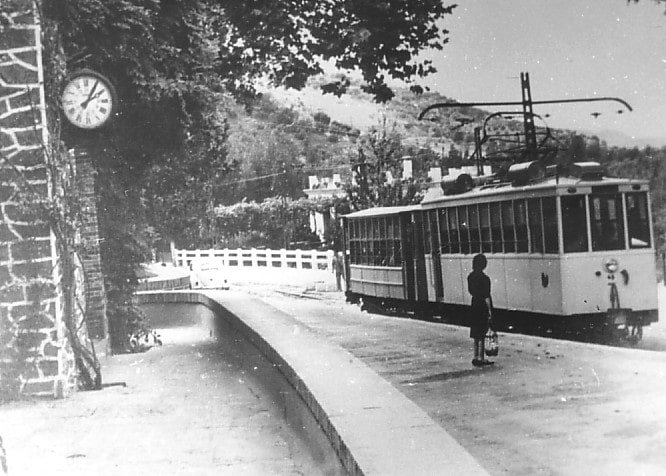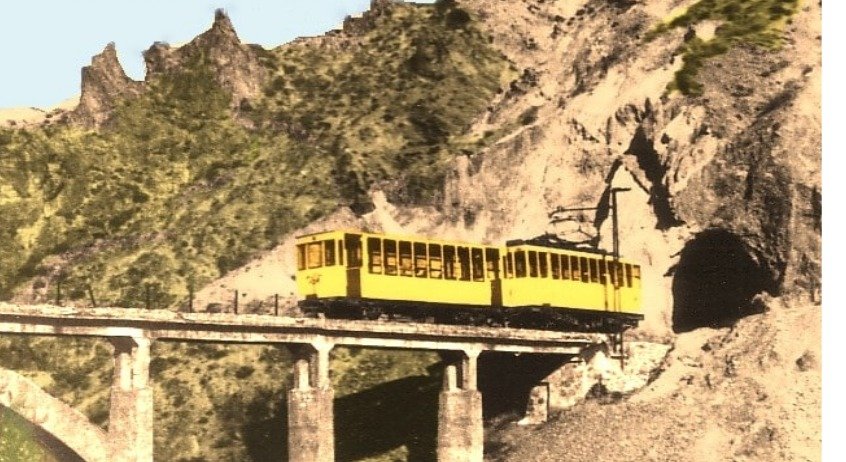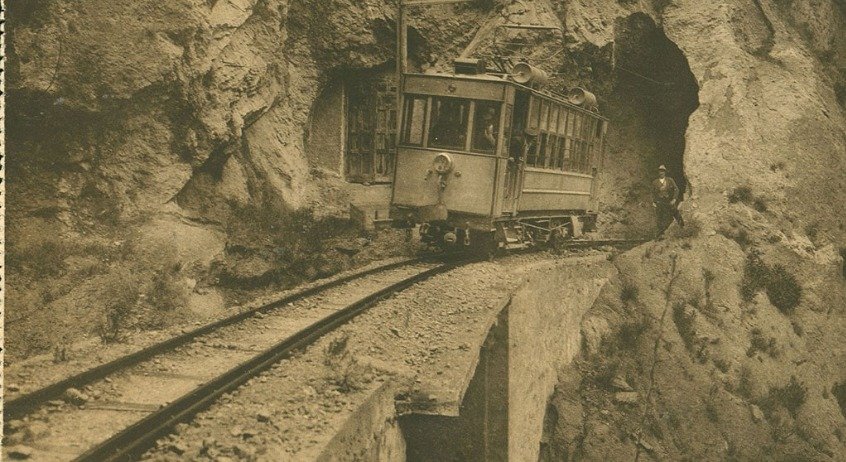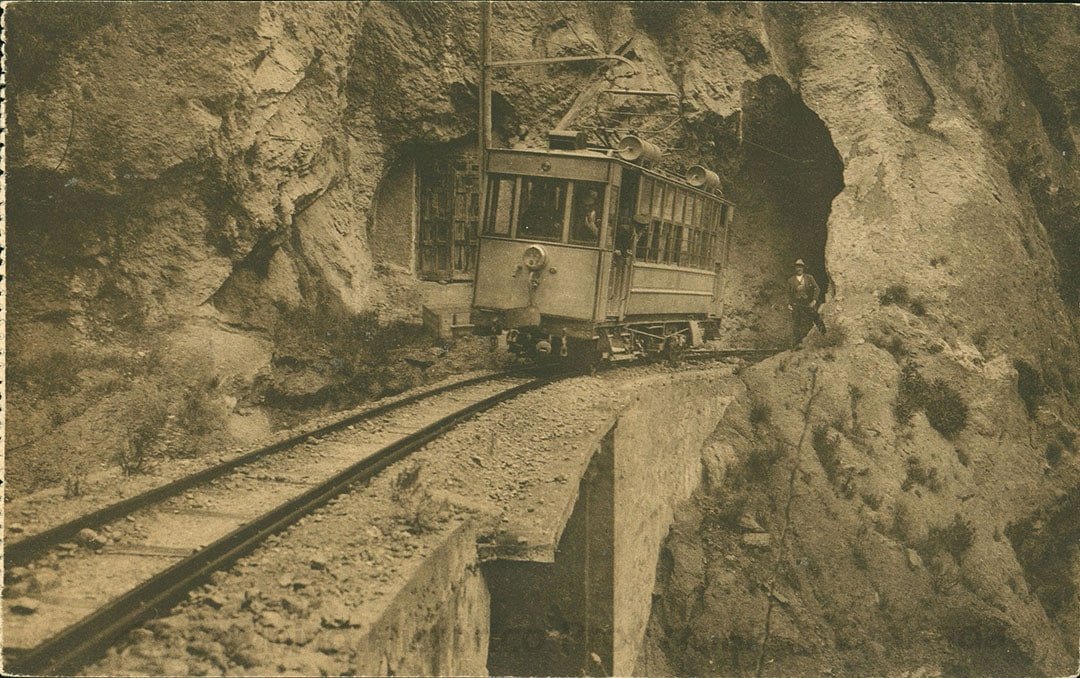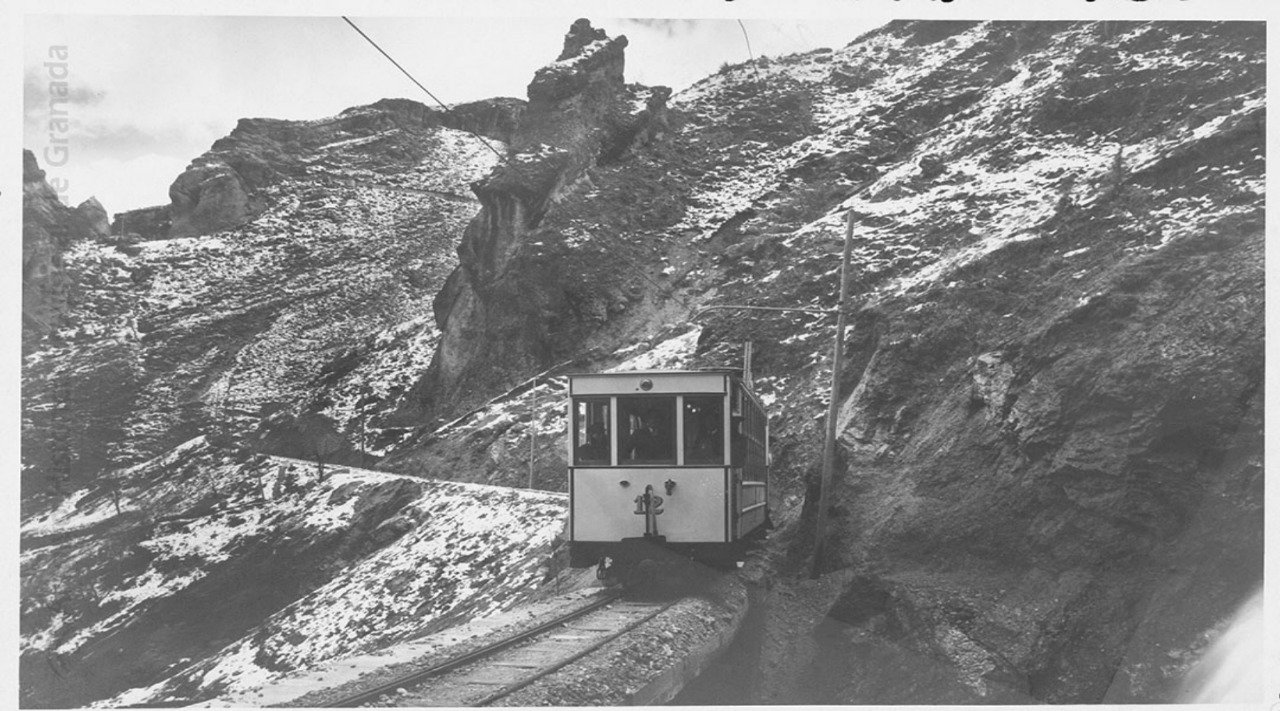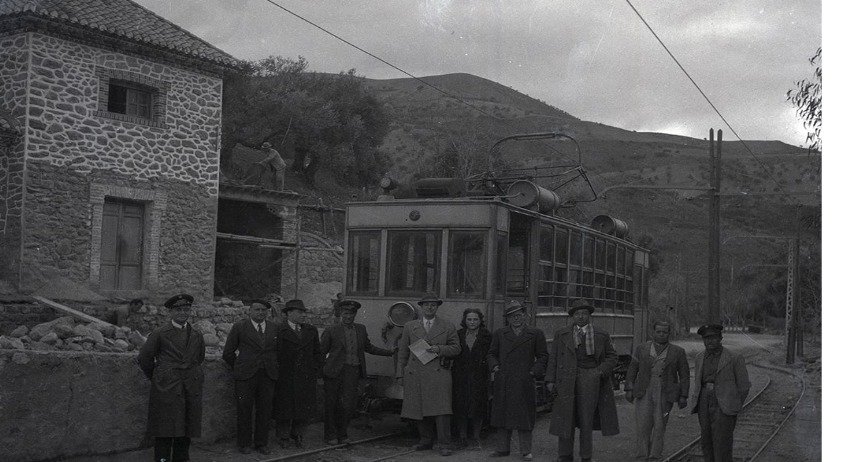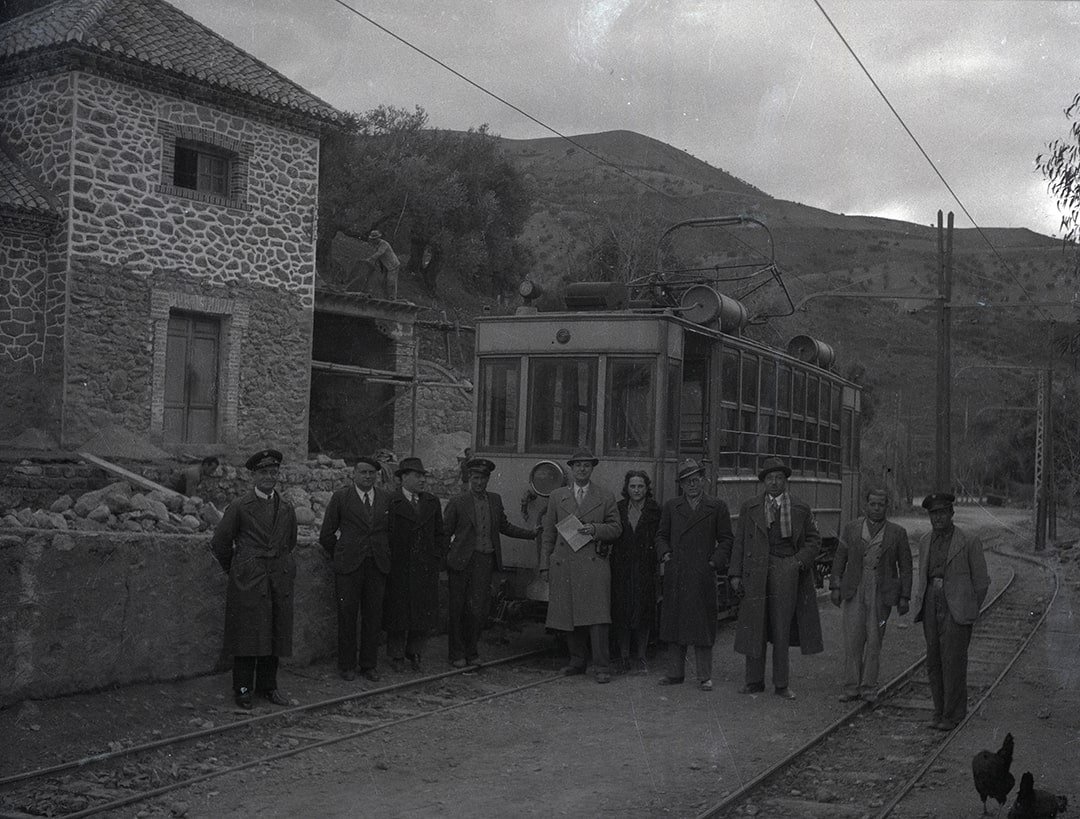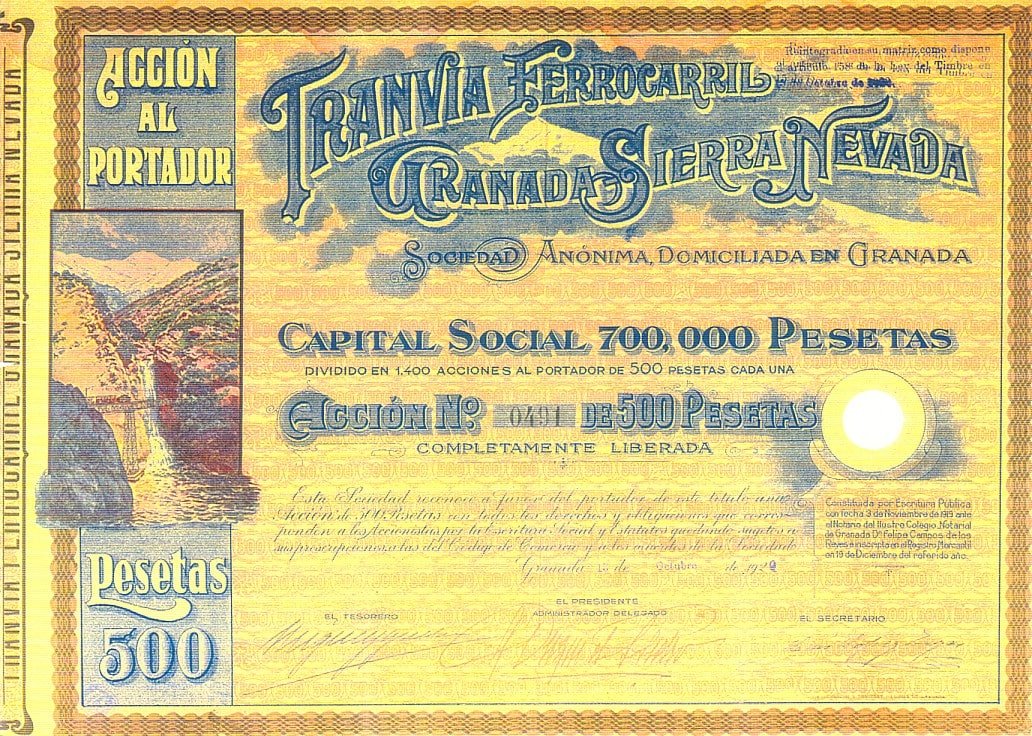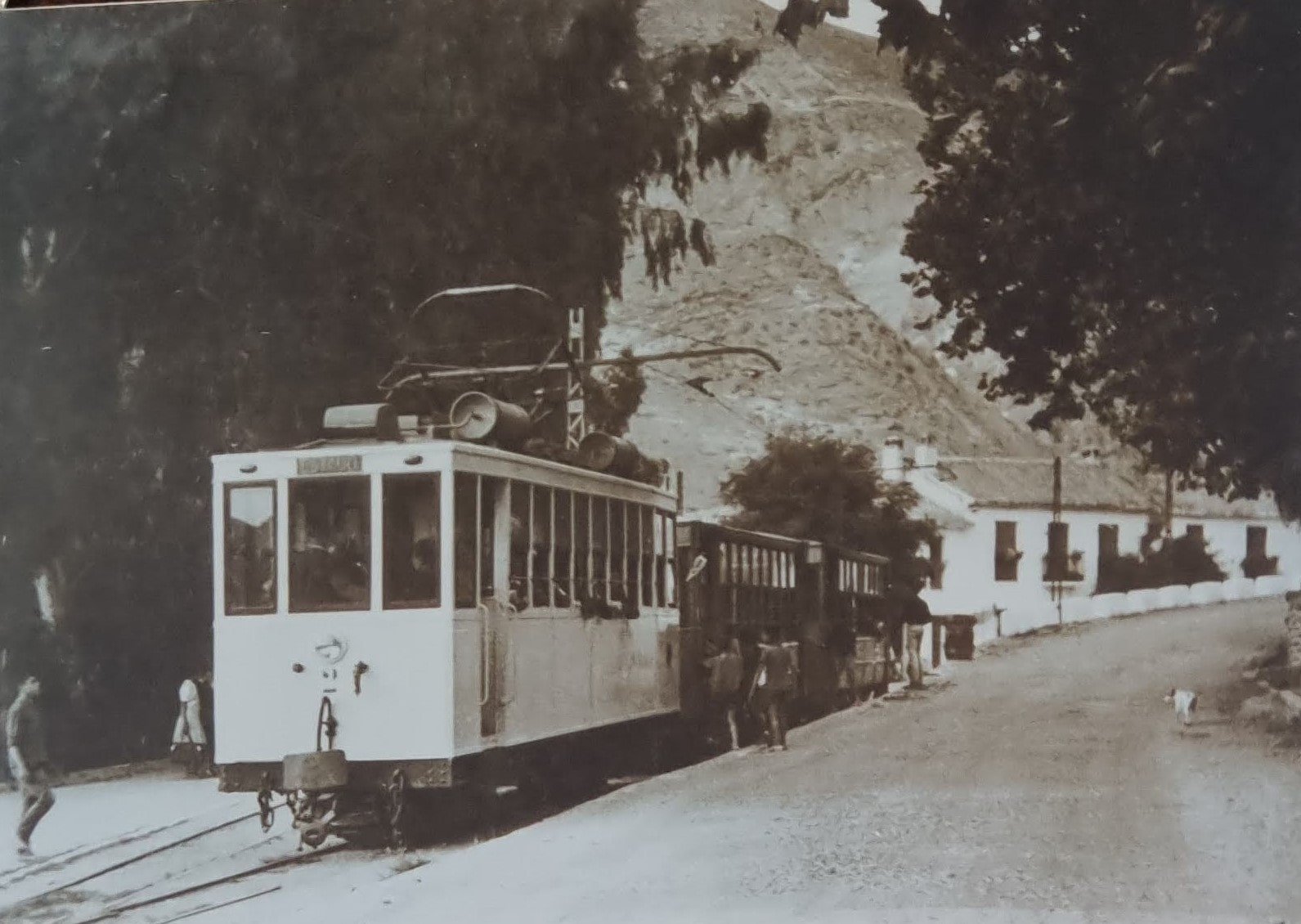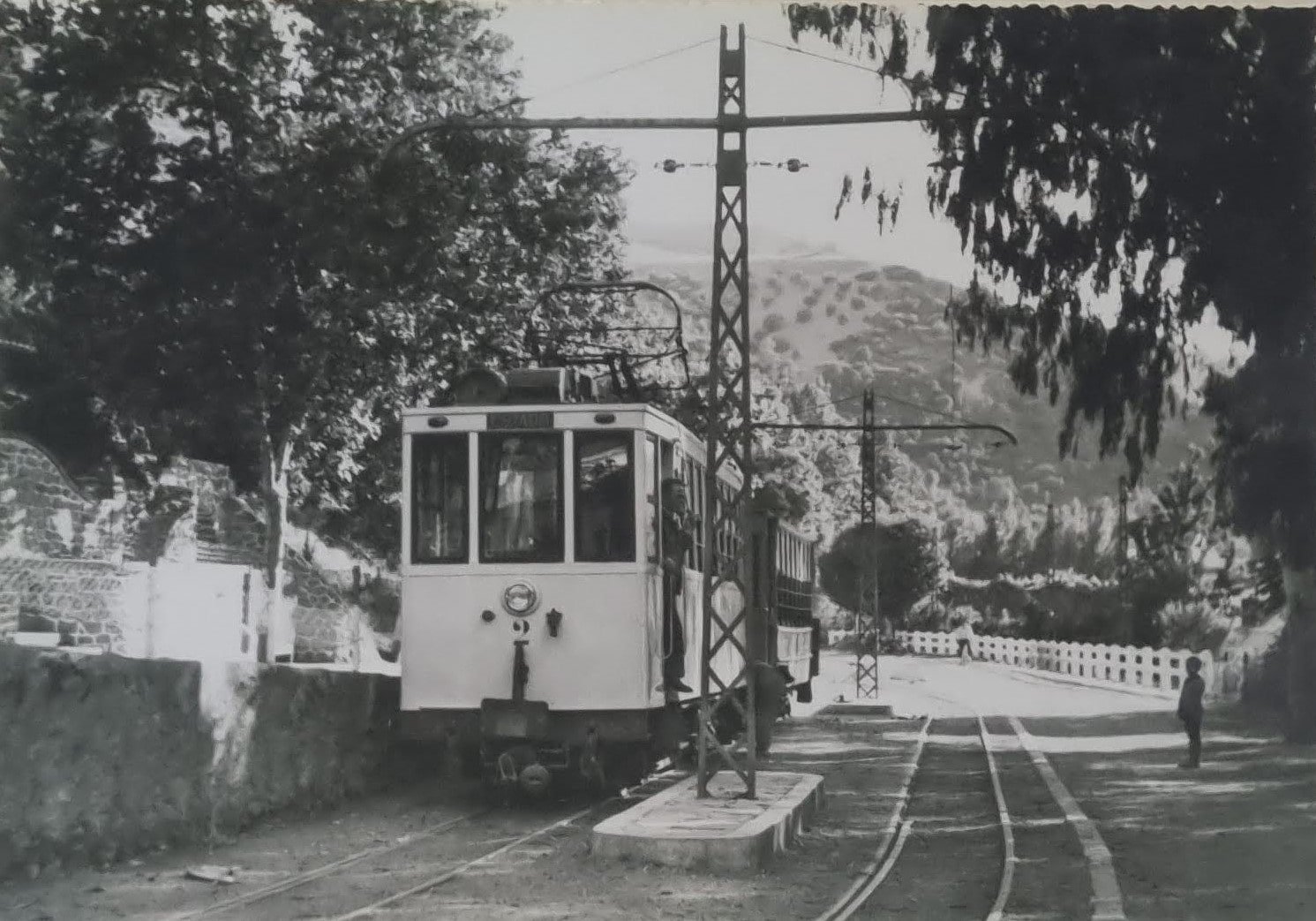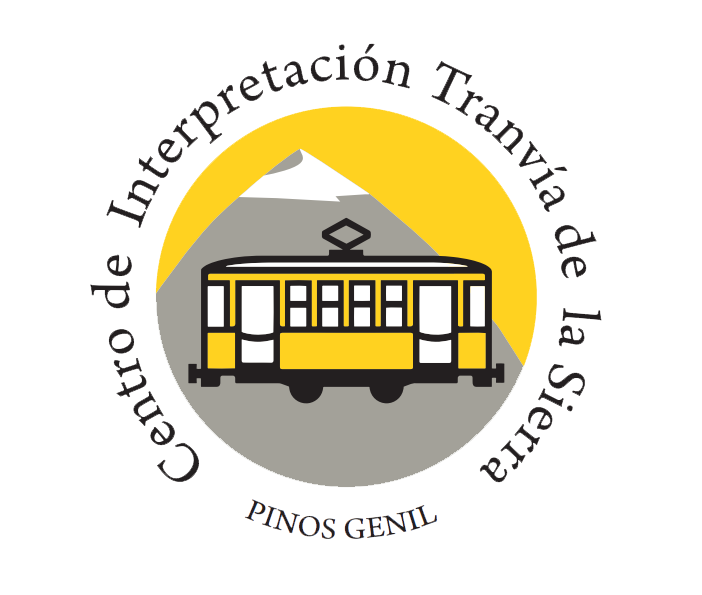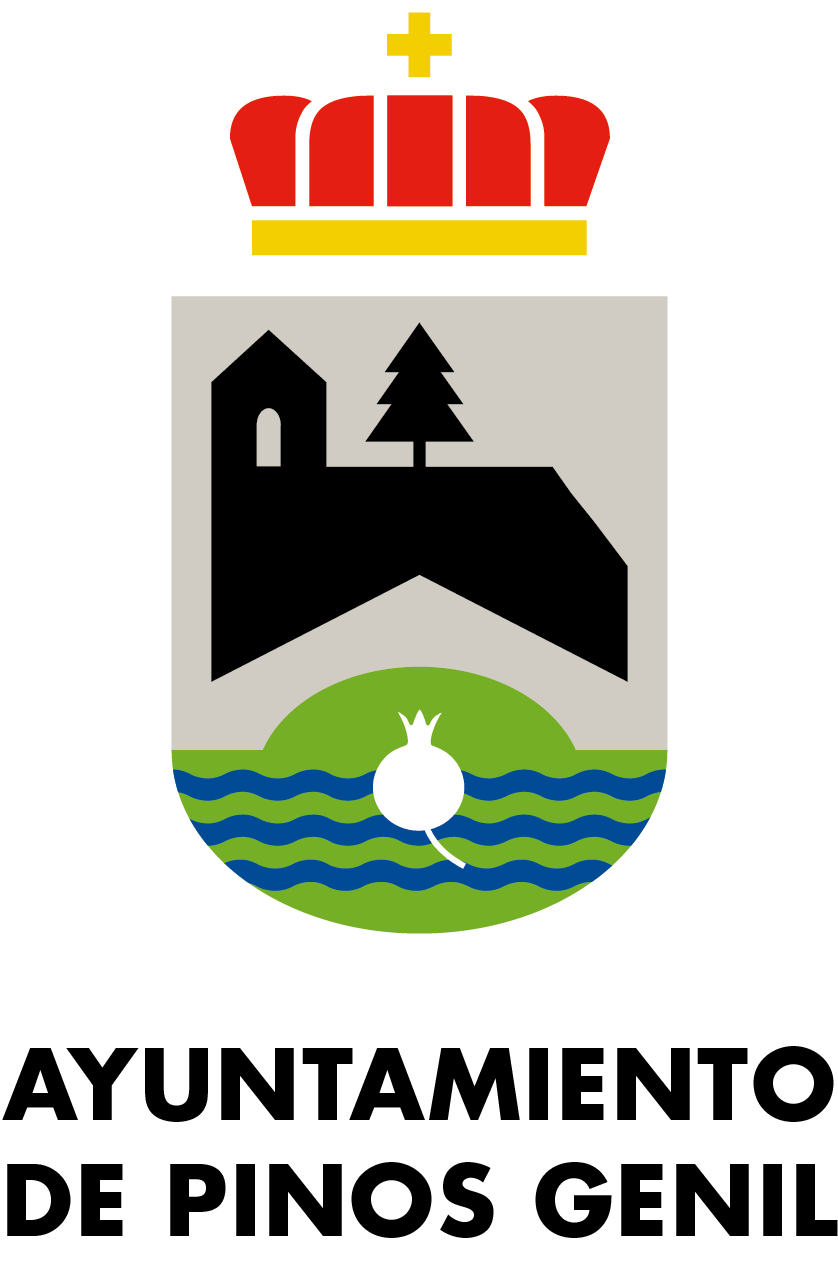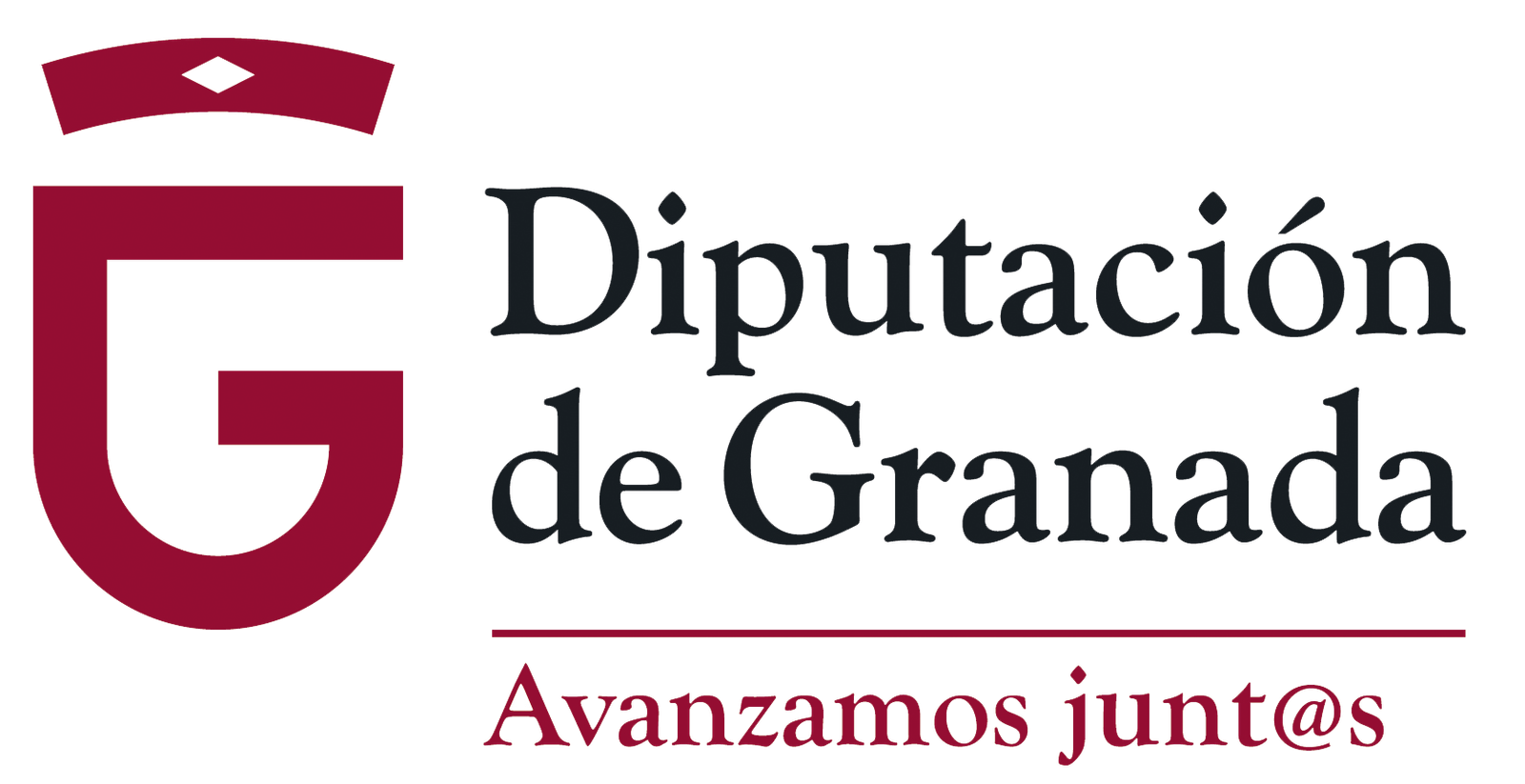The Sierra Nevada Tramway ( 21st February 1925 – 19th January 1974)
It was conceived as an ambitious project of an eminently touristic nature that would link Granada with the Sierra Nevada. Its promoter was Julio Quesada Cañaveral y Piédrola, Duke of San Pedro de Galatino, Count of Benalúa and Las Villas and Lord of Láchar.
To carry it out, he set up the companies “Tranvía-Ferrocarril Granada Sierra Nevada S.A.”, with the issue of 1,200,000 nominal pesetas in mortgage bonds and “San Pedro. Eléctrica Maitena S.A.”, with the issue of 750,000 pesetas nominal in 1,500 debentures; both of 500 pesetas each and at 7% interest and through the bank of Mr. Sons of Mr. Manuel Rodríguez Acosta and Mr. González de la Cámara. The chairman of the Board of Directors of both was the Duke of San Pedro.
The initial project, commissioned to the engineer José Morell, would start from Las Vistillas near the Alhambra Palace Hotel. It would have 14 kilometres of ordinary track, 17 kilometres of rack railway, 6 kilometres of funicular railway and a short ascent to the peak of the Veleta. It would cost 16 million pesetas and included a hotel in the Sierra, known as the Hotel del Duque.
The road and the Sierra Nevada tramway
In 1919 the construction of the Sierra Nevada road begins and the track is laid at the same time. In May 1920 work began on the railway to the Sierra Nevada. Power was supplied by the power station built on the Maitena river by the San Pedro company, Eléctrica Maitena S.A., which, with a 265 metre waterfall, would serve to power the tramway and the Hotel del Duque.
The tramway line from Granada to Sierra Nevada
On 21st February 1925 the section from Granada to Canales was inaugurated, in June it reached Güéjar Sierra and in 1928 to the Maitena station, from where it was taken to the Hotel del Duque by horse-drawn carriage.
The extension from Maitena to Barranco de San Juan, with an intermediate station at El Charcón, began in 1944 and was inaugurated in 1947.
The Sierra Nevada tramway had 14 tunnels and 21 bridges along its almost 20 km route. Of particular note is the Blanquillo bridge, one of the first reinforced concrete constructions in Spain, the arcades over the Poyos Canaleros site and the marvellous Cueva del Diablo, a natural cavity which the tramway accessed at both ends through two tunnels. All these places are now under the waters of the Canales reservoir.
From the Duque de San Pedro’s project, it was not possible to reach the Estrella and the construction of the cable car to link up with the area of the Albergues.
In 1973, the operating company submitted the closure proposal to the Government. The construction of the Canales reservoir would flood more than five kilometres of the route. The Council of Ministers of 7th December 1973 agreed to close the line. The last journey was made on 19th January 1974. Some of the material was sold for scrap, the tracks and power lines were dismantled and the stations abandoned. The platform on which it ran was used to widen the road to the sierra and from Maitena, to build a narrow road that allows you to reach the Barranco de San Juan by car.

